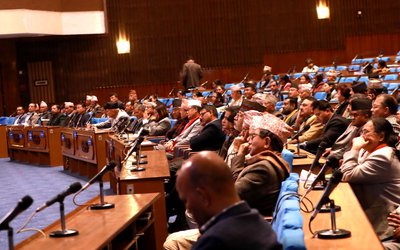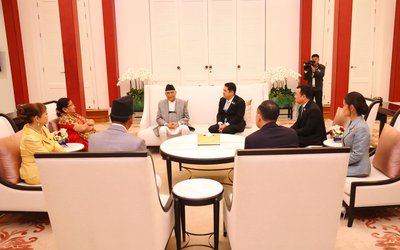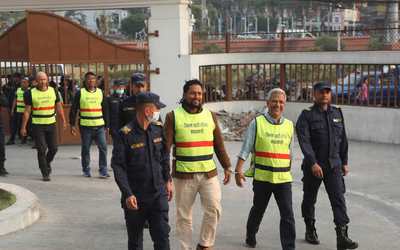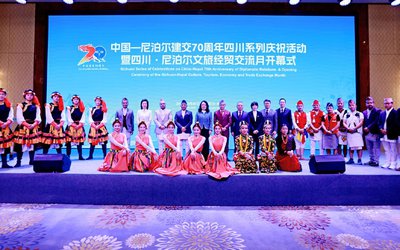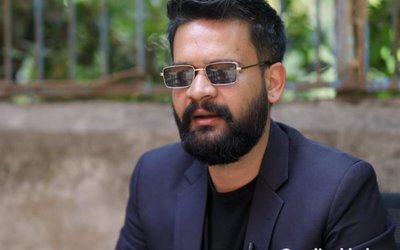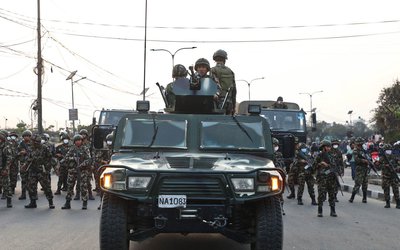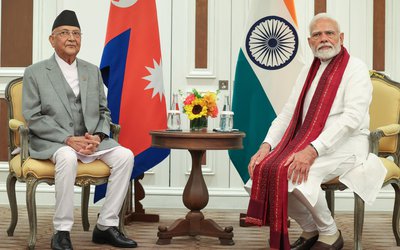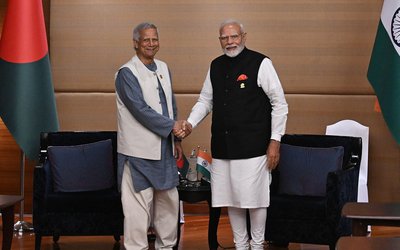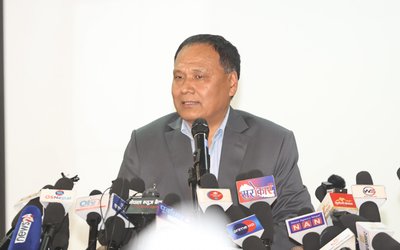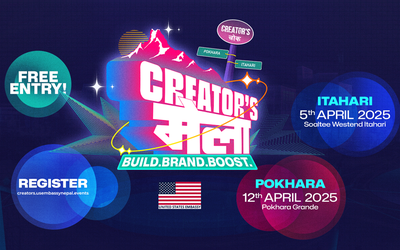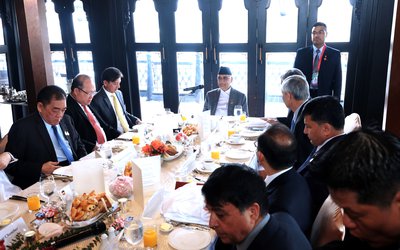
Although the Association of International NGOs in Nepal (AIN) has been campaigning for mainstreaming people with disabilities in the society, a large number of its member organizations are yet to do the mainstreaming.
AIN member organizations have initiated a series of programs to make their workplace more accessible and inclusive to people with disabilities and to give the differently able people priority in jobs. However, the study report recommends that the current efforts need to further acceleration.
According to key findings on human resource diversification, 1.25 per cent of the total staff members within participating organizations are people with disabilities, 4.4 percent of the total staff members in partner NGOs are people with disabilities, 39. 3 percent of the participating organizations have a disability focal person in the organization to oversee the disability related program and 41 percent of organizations have trained staff on disability and disability mainstreaming.
On governance, the report shows that more than 50 percent of the organizations have integrated disability inclusion in their policies. In management practices, out of 56 organizations, 43 (83 percent) are implementing disability related programs using different approaches.
On financial resources, the study shows that 48 organizations provided information on institutional budget for year 2015 where 18 organizations have a separate budget for the disability program.
The study found that 3.9 percent of the total budget is allocated to the disability program which shows a good level of inclusion (3-7 percent of budget allocation for inclusion of people with disabilities).
So far as accessibility is concerned, 37.5 percent are accessible to persons with disabilities. Although the study group sent questionnaire to all 125 member organizations, only 56 (45 percent) participated in the study.
The study recommends that AIN members develop disability inclusion policies.
As INGOs workforce needs to be inclusive, the report suggests strengthening the workforce diversity by increasing staff with disabilities at all levels to at least 3 percent in two years. The report also suggested AIN members to continue to encourage partner NGOs to include people with disabilities in their staffing. The report, among others, recommends to appoint persons who have competencies in issues of disability. The report also suggests to allocate at least 2 percent of the total budget for the inclusion of people with disabilities (3-7 percent) as ideal and targeted.
National Census 2011 reported that Nepal has 513,321 (1.94 percent) of the total population with some disability and the number of females stands at 233,235 or 45.4 percent of disabled.
Nepal Living Standards Survey Report 2012 showed that the number is above 4 percent. However, the groups working in the area of disabilities hold the view that the figure is much higher or above 15 percent.
Presenting the survey report, Suraj Sigdel, AIN DWG Member, pointed out the need to make INGOs more inclusive for people with disability.
With the national average of 4 percent of people with disability employed in the government sector, the INGOs and NGOs need to increase the current numbers. There is also the need to make the buildings of INGOs disability friendly.
Released jointly by Secretary of Women, Children and Social Welfare Madhu Prasad Regmi, and vice chairperson of AIN and country director of Handicap International Nepal Sarah Blin, the AIN Inclusion Survey Report is the first of its kind, which reveals the state of INGOs and NGOs in addressing the issue.
At the program conducted by Reshma Shrestha, secretary Regmi said that the ministry wanted to work together with AIN to make Nepal inclusive and friendly to the people with disabilities. “I am proud to say that Nepal government has over 5 percent of permanent staff with disabilities and the government is increasing its budget to address the issue of disability,” said Regm.
Organized by AIN Disability Working Group (AIN-DWG), Shaurabh Sharma, the Working Group Coordinator, shared the DWG achievements of 2015 and plan for 2016.
Sharing on disability related new policies and programs of Nepal government Humkala Pandey, Under Secretary, Disability Rights Promotion Department, Ministry of Women, Children and Social Welfare, said that Nepal government has already announced several policies to protect the interest of persons with disability.
The reports on the findings of the Regional Employment Dialogue for Persons with Disability NFDN and Chitwan Association of Industries and Pokhara were also presented. Vice chair Sarah Blin and Dr. Khem Karki, member secretary of Nepal Health Research Council, jointly unveiled the Disability Toolkits.
The Association of International NGOs in Nepal (AIN) has been an active network in the development sector of Nepal since 1996. It has 124 INGOs as its members, who have been implementing various people-centered development programs throughout Nepal.
The UN Convention on the Rights of Persons with Disabilities (CRPD) was ratified by Nepal in 2011. The ‘World Report on Disability’ by the World Bank and the World Health Organization illustrates a disability prevalence rate of 15.4; however this figure could go up to 19 percent in developing countries (WDR 2011), according to an AIN press release.
“There are various evidences of correlation between disability and poverty: people who have disabilities are more vulnerable to poverty and poor people are more at risk to acquire disabilities. It is therefore essential to include people with disabilities in all developmental endeavors, including DRR and Emergency Response,” said Shaurabh Sharma, AIN DWG coordinator.
AIN through the Disability Working Group (DWG) has initiated some fundamental steps in the areas of disability mainstreaming for last few years. Some AIN members exclusively work in the area of disability and development while others work with a broader inclusive approach, disability being addressed as cross-cutting issue. At DWG level, we have realized that AIN members would need to mainstream disability.
“Through various initiatives, AIN members and other organizations reformulate their approach towards disability inclusion in development actions, such as making accessible office structure, providing equal opportunities for persons with disabilities in their workforce, making affirmative planning and monitoring actions to see the disability inclusion in their development programs, however this is often not yet institutionalized,” said Sharma.
“Disability is a pertinent issue in all development efforts, including DRR and Emergency Response and we shall use twin track approach of 1) Disability specific: empower persons with disabilities, their families and representing organizations to access development services such as health-including WASH, education, livelihood, participate in social and political activities; and 2) Societal: mainstreaming disability– working together to identify and overcome the barriers in society that people with disabilities face e.g. physical accessibility, communication, attitude, legislation. It involves the inclusion of persons with disabilities into all aspects of life on equal basis as people without disabilities in order to improve their quality of life,” says the AIN press release.
At a time when people with disabilities are facing many problems, the study report conducted by 22 members AIN DWG working group will be of help to make the society inclusive for all.

Keshab Poudel
Poudel is the editor of New Spotlight Magazine.
- FM Dr. Deuba’s India Visit: Mission Aborted
- Mar 26, 2025
- AMBASSADOR MAEDA TORU: Warm Regards
- Mar 24, 2025
- PRO-MONARCHY MOVEMENT: Rising Dissatisfaction
- Mar 23, 2025
- Dr. PRABIN MANANDHAR: Person With Humility
- Mar 16, 2025
- US SUSPESION OF GRANT: Impact On Nepal
- Mar 10, 2025
